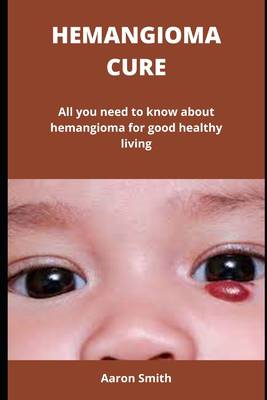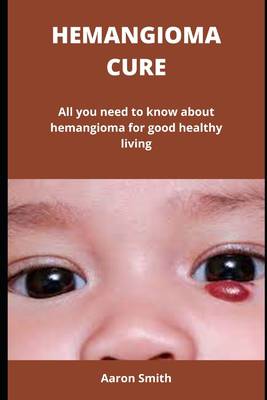
- Afhalen na 1 uur in een winkel met voorraad
- Gratis thuislevering in België vanaf € 30
- Ruim aanbod met 7 miljoen producten
- Afhalen na 1 uur in een winkel met voorraad
- Gratis thuislevering in België vanaf € 30
- Ruim aanbod met 7 miljoen producten
Zoeken
Hemangioma Cure
All you need to know about hemangioma for good healthy living
Aaron Smith
Paperback | Engels
€ 10,45
+ 20 punten
Omschrijving
What is a hemangioma?
Hemangiomas, or infantile hemangiomas, are noncancerous growths of blood vessels. They're the most common growths or tumours in children. They usually grow for a period of time and then subside without treatment. A hemangioma (he-man-jee-O-muh) is a bright red birthmark that shows up at birth or in the first or second week of life. It looks like a rubbery bump and is made up of extra blood vessels in the skin. A hemangioma is a benign (noncancerous) tumour made up of blood vessels. There are many types of hemangiomas, and they can occur throughout the body, including in skin, muscle, bone, and internal organs.Most hemangiomas occur on the surface of the skin or just beneath it. They often develop on the face and neck, and can vary greatly in colour, shape, and size.Because hemangiomas very rarely become cancerous, most do not require any medical treatment. However, some hemangiomas can be disfiguring, and many people seek a doctor's care for cosmetic reasons. In most cases of hemangioma, treatment does not involve surgery. Instances when surgery may be necessary include for tumours that are deep in muscle or bone, or for tumours on the skin that cause problems with vision, breathing, or eating.A hemangioma may be present at birth, but more often appears during the first several months of life. It starts as a flat red mark anywhere on the body, most often on the face, scalp, chest or back. Usually a child has only one mark. Some children may have more than one, particularly if they're part of a multiple birth.During your child's first year, the red mark grows rapidly into a spongy, rubbery-looking bump that sticks out from the skin. The hemangioma then enters a rest phase and, eventually, it begins to slowly disappear.Many hemangiomas disappear by age 5, and most are gone by age 10.
Specificaties
Betrokkenen
- Auteur(s):
- Uitgeverij:
Inhoud
- Aantal bladzijden:
- 34
- Taal:
- Engels
Eigenschappen
- Productcode (EAN):
- 9798846119291
- Verschijningsdatum:
- 11/08/2022
- Uitvoering:
- Paperback
- Formaat:
- Trade paperback (VS)
- Afmetingen:
- 152 mm x 229 mm
- Gewicht:
- 58 g

Alleen bij Standaard Boekhandel
+ 20 punten op je klantenkaart van Standaard Boekhandel
Beoordelingen
We publiceren alleen reviews die voldoen aan de voorwaarden voor reviews. Bekijk onze voorwaarden voor reviews.











